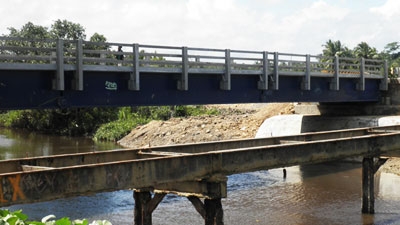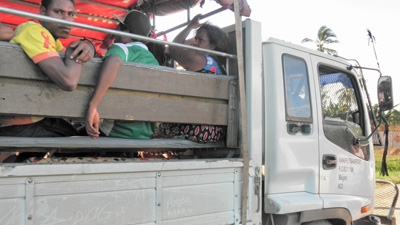Challenge
Over recent years, Papua New Guinea (PNG) experienced a severe decline in the condition of its roads and bridges. Without working roads, women may have to walk miles to a hospital after delivering their babies; children face long travel times in order to get to school—and are often completely cut off when it rains—while security risks are increased for women and girls. The supply and maintenance of roads and related infrastructure in the country is complicated due to the rugged, mountainous landscape, a widely dispersed population, and unconnected road networks.
Solution
The Road Maintenance and Rehabilitation Project (RMRP) strove to promote an efficient, safe, and reliable roads transport system in the participating provinces of Central, East New Britain, Manus, Morobe, Oro, Gulf, Western Province and West New Britain. An improved road system would enable children to reach school, decrease travel time to reach essential services—meaning better and more timely access to treatment—and connect local communities.
From 2002 to 2011, the Road Maintenance and Rehabilitation Project supported:
- Road maintenance and the rehabilitation of national roads
- Routine maintenance of provincial roads
- Bridge maintenance, rehabilitation, and replacement of priority bridges on national roads.
Results
As of August 2011, the project had worked in eight of the country’s 20 provinces to:
- Maintain and restore over 1,300 km of the country’s national roads
- Help maintain over 30 km and restored more than 160 km of critical provincial roads
- Strengthen capacity for 79 small- and medium-sized contractors and provincial administrations for road maintenance
- Rehabilitate or replace 49 bridges.



